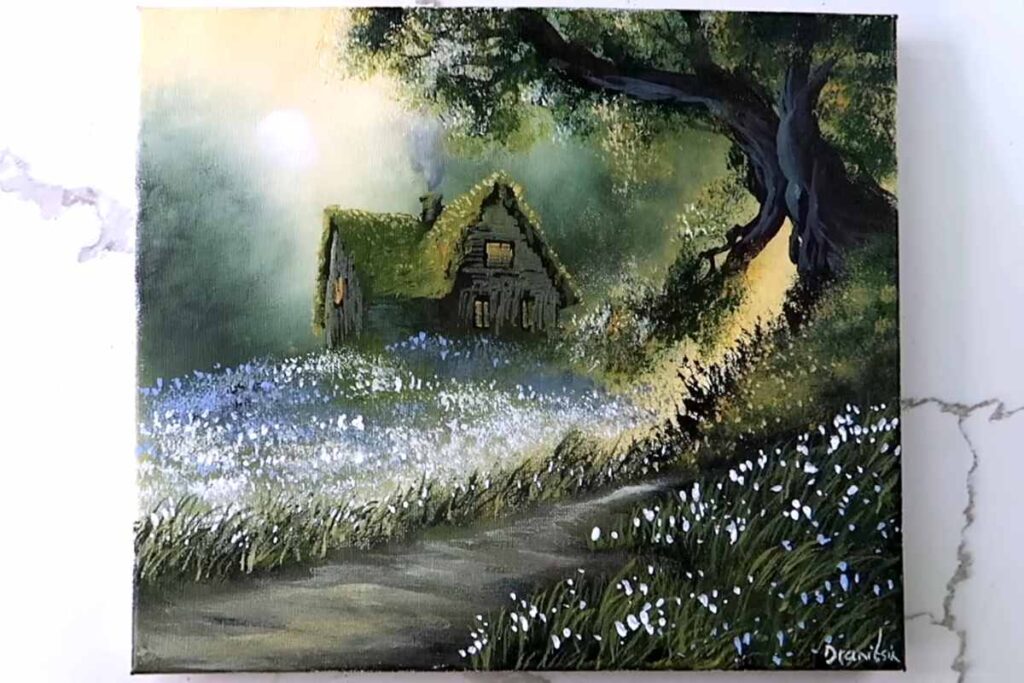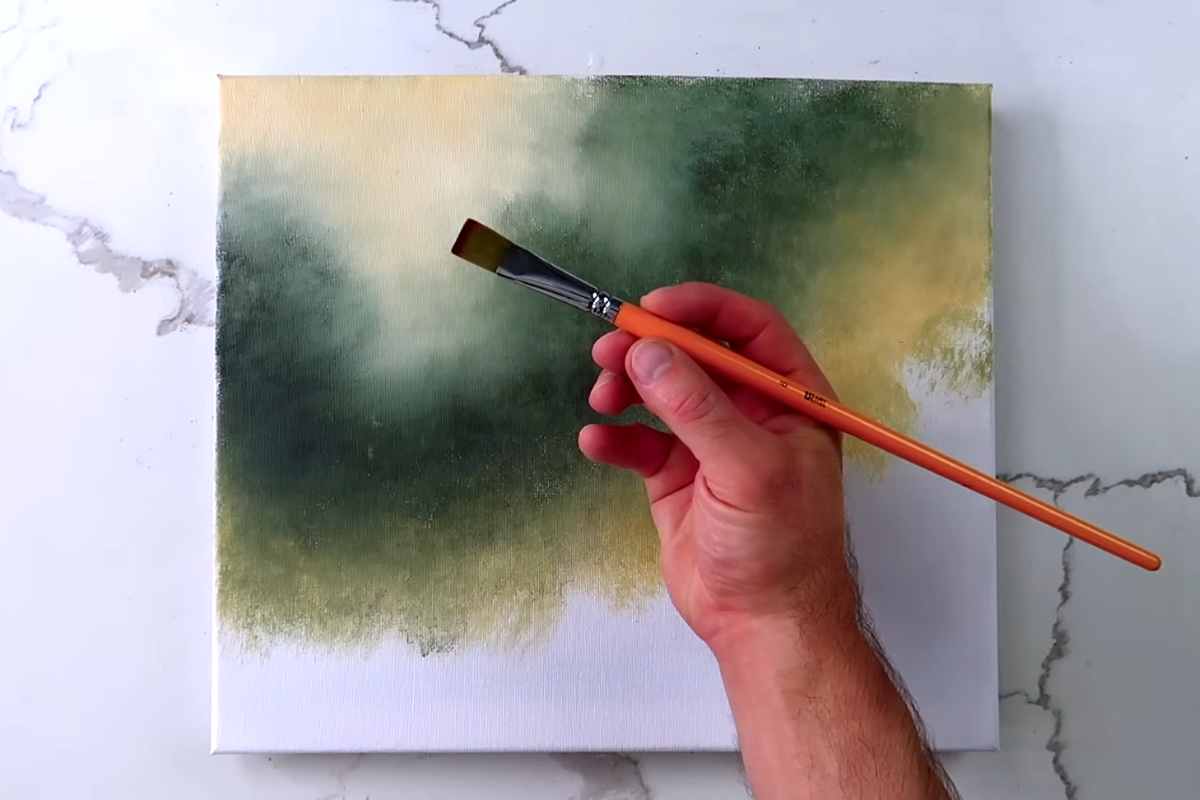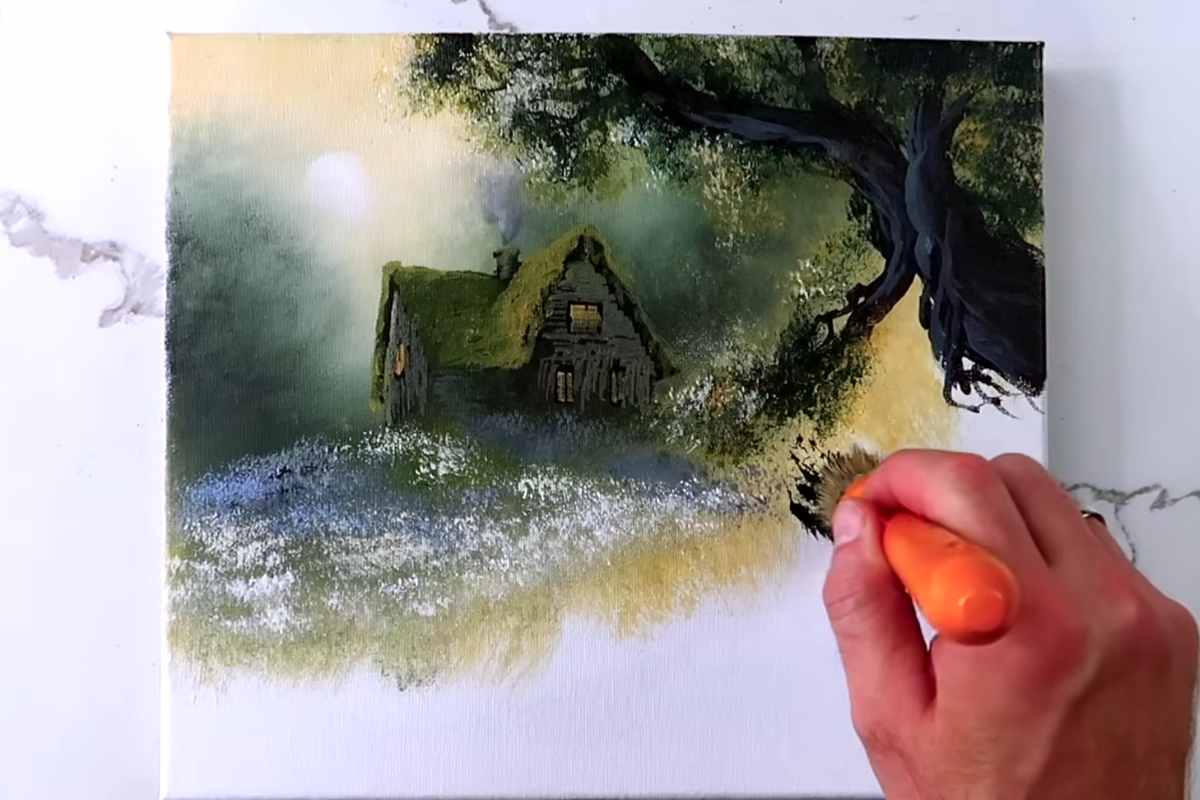Step-by-Step Guide to Painting a Flower Path Leading to a Cozy Cabin

Painting landscapes can seem like a daunting task, especially for beginners. However, acrylics provide a perfect medium for creating beautiful, textured works of art, even for those just starting out.
If you’ve ever dreamed of painting a serene landscape featuring a flower-lined path leading to a cozy cabin, then this tutorial is for you.
In this article, we’ll dive into the easy, step-by-step techniques that will guide you through the process, allowing your creativity to flourish and your blank canvas to transform into an enchanting scene.
Why Acrylic Painting for Beginners?
Acrylic paint is a fantastic choice for those new to painting due to its versatility, fast drying time, and ease of use.
Unlike oils or watercolors, acrylics don’t require intricate mixing techniques and are more forgiving, which makes them a great option for people just starting to explore the world of painting.
One of the best things about acrylics is that they are layerable. This means you can start with a simple base and gradually build up textures, colors, and details, making it easy to adjust and perfect your work along the way.
Whether you’re painting landscapes, portraits, or abstract designs, acrylics offer plenty of room for experimentation and improvement.
Creating the Flower Path to Cabin Scene
Acrylic painting is all about layers and textures, and this scenic landscape is no different. By using various techniques, you’ll be able to build depth, light, and shadow, resulting in a gorgeous, lifelike scene that transports viewers into a tranquil world.
The Scenic Pathway
The flower path in this painting serves as the focal point, inviting the viewer’s eye to wander down the trail and toward the cozy cabin. To create a realistic flower path, you’ll want to focus on layering colors to create depth.
Bright, vibrant flowers at the front of the path should gradually fade to darker, more muted tones as they move further into the background. This technique creates the illusion of distance and perspective, making the painting feel more alive.
You can experiment with colors to create a vibrant array of wildflowers. Purples, pinks, and yellows are wonderful colors to use, but don’t hesitate to mix other tones to create a custom palette.
The key is to make sure each flower is distinct, but still part of a harmonious scene. Adding small details, such as brushstrokes for petals and green stems, brings the flowers to life and gives them a natural, realistic texture.
The Tranquil Cabin
As you move your brush to the cabin, remember that this part of the painting should give off a feeling of warmth and comfort. The earthy tones of the wooden structure, with hints of yellow or orange in the windows, will contrast beautifully with the cooler tones of the path and greenery.
Pay attention to light and shadow around the cabin; soft highlights will suggest sunlight filtering through the trees, while deeper shadows will add structure and realism.
The cabin doesn’t need to be overly detailed; the simplicity of the shape and the use of textured strokes for the roof and walls will evoke a sense of coziness without overwhelming the viewer.
You’ll want to ensure that the cabin feels like a natural part of the landscape, nestled gently into its surroundings.
Adding the Tree and Background Elements
The large tree in this scene provides a grounding element, offering both texture and contrast. When painting trees, focus on the differentiation of light and shadow in the foliage.
Use darker greens and blues for the shaded areas and lighter shades for spots where the sun hits. The tree branches should have a flowing, organic feel, giving the painting a sense of movement as they reach across the canvas.
The background greenery should blend smoothly into the rest of the scene. Add subtle layers of color to the distant foliage, keeping the tones more muted to ensure the path and cabin remain the focal points.
You can also lightly sketch out the sky behind the tree, using pale colors for a softer, more atmospheric effect.
Working with Light and Texture
One of the most striking aspects of this landscape is the play of light. Acrylics allow for layering light and dark colors, which creates an immersive and realistic feel to the scene.
Use a dry brushing technique to add light touches to the path, the leaves, and the tree branches. These small, fine strokes create the illusion of sunlight hitting different areas and contribute to the painting’s depth.
Consider using a glazing technique with acrylics to build up transparency in specific parts of the painting. For example, a light glaze of yellow or white on the top of the flowers or over the cabin’s windows can suggest sunlight gently caressing the scene.
Unleashing Creativity
As you work through the painting, remember that creativity is key. Don’t feel confined to a specific pattern or technique; the beauty of this landscape is that it’s flexible and can be interpreted in various ways.
The sky can be more dramatic, with clouds swirling above the cabin, or you can opt for a simpler, more peaceful atmosphere. The flowers along the path don’t have to follow a set pattern—you can adjust their placement and color to your liking.
Experimenting with textures and brushstrokes allows you to make the scene uniquely yours. For instance, adding texture to the path with a stippled effect can make it feel more dynamic, while a smooth blend for the cabin walls will give it a polished finish.
The important thing is to enjoy the process and let the landscape evolve as you paint.
Perfect for Beginners
This “Flower Path to Cabin” painting is ideal for beginners because it breaks the painting down into manageable, clear steps.
Acrylic paints are forgiving, and you have the freedom to layer, adjust, and correct your work as you go. This makes it perfect for those new to painting, offering plenty of opportunity to learn and improve without feeling overwhelmed.
By following this step-by-step guide, you’ll not only learn new painting techniques, but you’ll also gain the confidence to explore different subjects and styles in your art journey.
Conclusion: A Peaceful Landscape Awaits
With each brushstroke, this painting brings you closer to capturing the peaceful beauty of a flower-lined path leading to a serene cabin nestled in nature.
Through this easy-to-follow tutorial, you’ll discover the magic of transforming a blank canvas into a picturesque, tranquil scene.
Whether you’re an experienced artist or just starting, this project allows you to unleash your creativity and bring a world of beauty and imagination to life.
Take this opportunity to relax, paint, and enjoy the process. The simple joy of creating your own nature-inspired masterpiece is waiting for you, and this tutorial will guide you every step of the way!
We thank URARTSTUDIO for the images.
Enjoy The Video Tutorial

Source: URARTSTUDIO
Did you find this post useful or inspiring? Save THIS PIN to your Art Board on Pinterest! 😊

Last update on 2025-11-21 / Affiliate links / Images from Amazon Product Advertising API




Discover More Artistic Inspiration